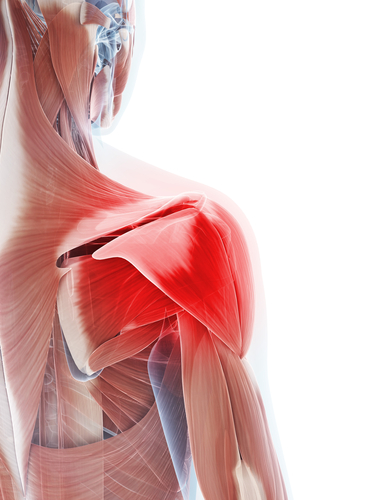
Understanding Rotator Cuff Injuries: Causes, Symptoms, and Diagnosis
May 7, 2023 10:05 pm Leave your thoughtsThe rotator cuff is a group of muscles and tendons that surround the shoulder joint, allowing it to move freely while keeping it stable. These muscles enable you to lift your arms and rotate your shoulders. Rotator cuff injuries are prevalent, especially among athletes involved in repetitive overhead activities such as baseball, volleyball, and tennis.
Causes of Rotator Cuff Injuries
Rotator cuff injuries can be acute or chronic. Acute injuries are usually a result of a single traumatic event such as a fall or accident. Chronic injuries develop over time due to overuse and repetitive motions, causing tears or damage to the rotator cuff tendon.
Other causes of rotator cuff injuries include age-related degenerative changes, poor posture, and bone spurs. Poor posture such as a forward-head position, rounded shoulders, or a slouching posture can result in overuse of the rotator cuff muscles, leading to injury.
Symptoms of Rotator Cuff Injuries
The symptoms of a rotator cuff injury can vary depending on the severity of the injury and the underlying cause. Common symptoms of rotator cuff injuries include:
- Pain: Pain is usually the first and most common symptom of a rotator cuff injury. The pain may be mild or severe and may occur when lifting or moving your arm, or even at rest.
- Weakness: Weakness in the arm or shoulder is another common symptom of rotator cuff injuries. You may find it difficult to lift objects or even move your arm.
- Stiffness: Stiffness in the shoulder joint is another common symptom of rotator cuff injuries. You may find it challenging to move your arm and may experience a decreased range of motion.
- Clicking or Popping Sounds: Clicking or popping sounds in the shoulder joint can also be an indicator of rotator cuff injury. The sounds occur when the joint moves and can be accompanied by pain.
- Swelling or Tenderness: Swelling or tenderness in the shoulder joint may also indicate a rotator cuff injury. The swelling can be a result of inflammation or a build-up of fluid in the joint.
Diagnosis of Rotator Cuff Injuries
To diagnose a rotator cuff injury, a visit to a doctor is necessary. The doctor will first evaluate your symptoms, looking for signs of pain, weakness, and stiffness. The doctor may also ask you to perform certain movements to evaluate your range of motion.
The doctor may also order imaging tests such as MRI, X-ray, or ultrasound to assess the severity of the injury. These tests provide detailed images of the structure of the shoulder joint and can identify any tears or abnormalities in the rotator cuff.
Treatment of Rotator Cuff Injuries
The treatment of a rotator cuff injury depends on the severity of the injury and the underlying cause. Mild injuries may be treated with conservative methods such as rest, ice, and physical therapy.
Physical therapy can help to strengthen the muscles around the shoulder joint, improving range of motion while reducing pain. In some cases, the doctor may prescribe pain relief medication or corticosteroid injections to reduce inflammation and pain.
Severe cases of rotator cuff injuries may require surgical intervention. Surgery aims to repair the torn or damaged tendons in the rotator cuff. The type of surgery depends on the location and severity of the injury and can range from open surgery to arthroscopy.
Prevention of Rotator Cuff Injuries
Prevention of rotator cuff injuries involves reducing the risk factors that contribute to overuse or injury to the shoulder joint. To reduce the risk of a rotator cuff injury, consider the following tips:
- Maintain Good Posture: Maintaining good posture is essential to reduce the risk of rotator cuff injuries. Proper posture distributes the weight evenly on the shoulders, reducing stress on the rotator cuff muscles.
- Stretch Before Exercise: Stretching before any exercise or activity is crucial to warm up the muscles, reduce stiffness, and prevent injury.
- Use Proper Technique: Using proper technique while performing overhead activities such as lifting weights or playing sports can help reduce the risk of rotator cuff injuries.
- Take Breaks: Take frequent breaks when performing repetitive activities such as typing on a keyboard to reduce overuse and muscle fatigue.
Final Thoughts
Rotator cuff injuries are a common occurrence, especially among athletes and people who perform repetitive overhead activities. Understanding the causes, symptoms, and diagnosis of rotator cuff injuries is essential to prevent and treat them effectively. If you experience any symptoms of a rotator cuff injury, seek medical attention as soon as possible to avoid permanent damage.
Categorized in: Rotator Cuff Injury
This post was written by admin
